Porto vs Lisbon: which one is better?
Are you planning your holiday in Portugal and can't make up your mind? If the flight costs the same, you are faced with a difficult choice.
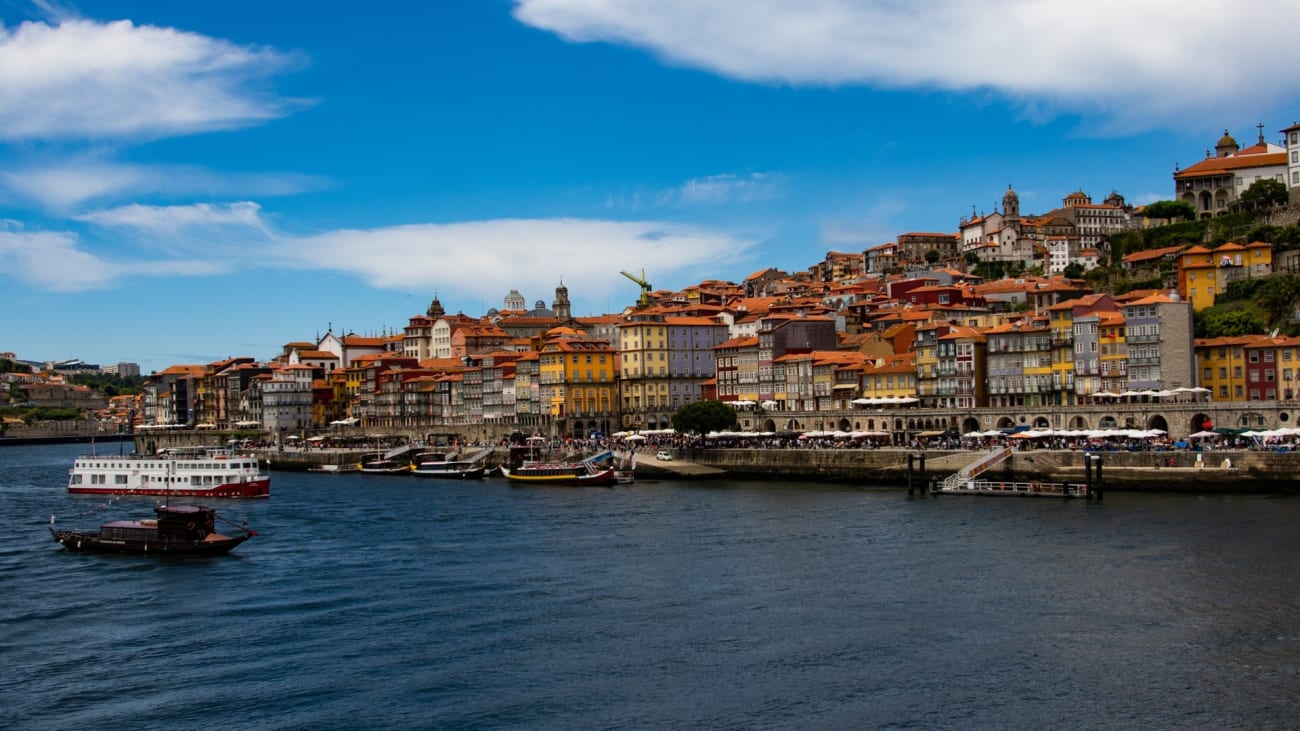
Porto, Portugal | ©Magda Ehlers
If the Portuguese capital is much more renowned, Porto's reputation continues to grow. To help you choose, we have prepared a small guide that summarises the main characteristics of both destinations.
What to see in Porto vs. what to see in Lisbon?
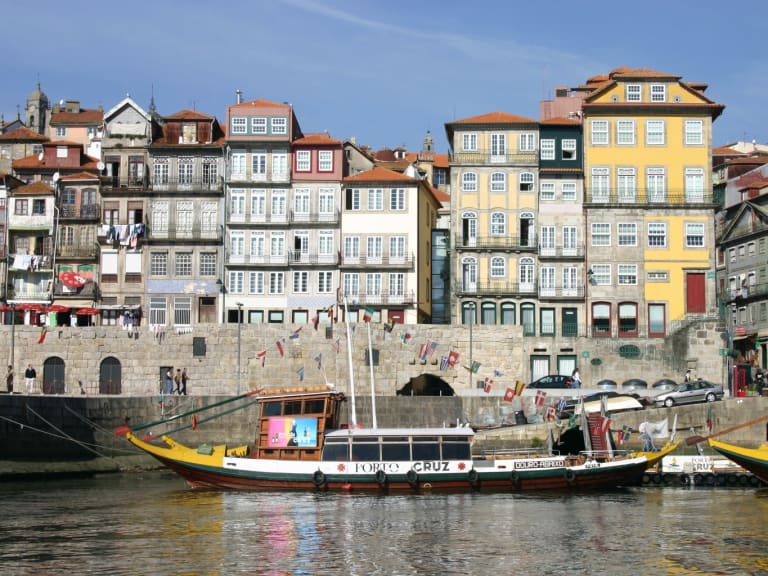
Even if you've never been to Portugal, when you mention the country, you'll almost certainly think of Lisbon. The capital is the best known city and has been a renowned tourist destination for decades. Thousands of tourists choose it over its northern cousin because it has more sights to see. However, Porto has a lot of charm and although it has fewer sights, it is becoming more beautiful every year to attract visitors.
The two Portuguese cities have always been rivals and each has its own peculiarity. In Porto, the most famous attractions are the Ribeira (a picturesque riverside promenade between the Dom Luís I and Arrábida bridges), the Lello e Irmão bookshop (an elegant shop in a 1906 neo-Gothic building) and the Igreja e Torre dos Clérigos, a baroque temple designed by the architect Nicolau Nasoni on whose top is the best panoramic viewpoint in Porto.
On the other hand, the main attractions of the Portuguese capital are the seaside neighbourhood of Belém, (where the best examples of Manueline architecture are located: the Jerónimos Monastery and the Belém Tower), Praça do Comercio (the heart of Lisbon and a symbol of the renaissance after the Great Earthquake of 1755) and its picturesque viewpoints that are located in several points of the city of Camões, from Alfama to the Bairro Alto.
Porto's architecture vs. Lisbon's architecture
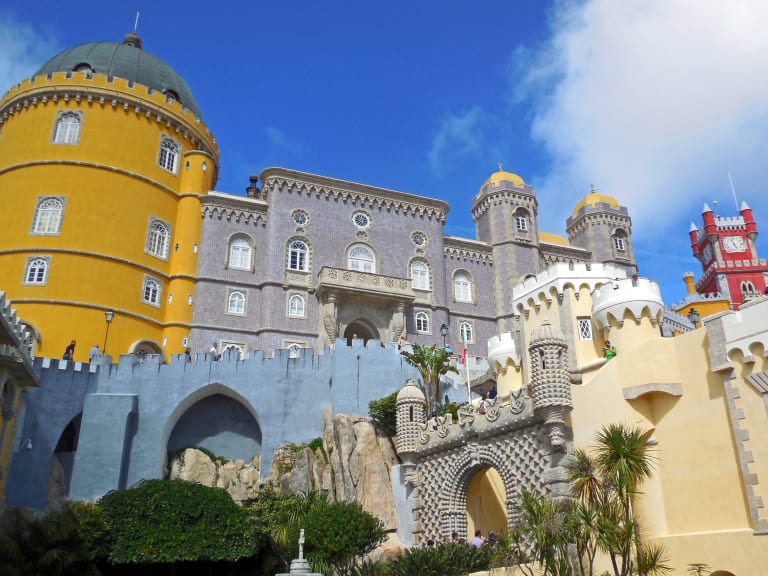
Lisbon is a little gem. Although there is no shortage of monuments and majestic buildings, its charm lies in its picturesque streets that insinuate themselves between old and colourful buildings. Although such examples can also be found in Porto, this city is better known for its modern buildings designed by local and foreign archistars.
The two cities are similar in style: most of the buildings in the centre date back to the colonial era, when Portugal ruled the seas and wealthy merchants built elegant buildings to show off their power. You'll see Gothic palaces and tiled facades in both destinations.
By contrast, the Manueline (a 100% Portuguese style) is more present in the capital and yet there is no shortage of examples in the northern city. The Pelourinho (an old pillory in front of the Cathedral) and the Igreja de Santa Clara (Largo Primeiro de Dezembro) are two clear examples.
Porto is known for its contemporary architecture. If you like the theme, you absolutely must see the new Vodafone headquarters (a futuristic structure designed by the Barbosa & Guimarães studio, Avenida da Boavista 2949), the Faculty of Architecture (a set of buildings facing the Douro River, Via Panorâmica Edgar Cardoso), the Casa do Cinema Manoel de Oliveira (commemorating the Portuguese filmmaker Manoel de Oliveira) and the Fundaçao Serralves, Porto's contemporary art museum.
In the Portuguese capital, modern architecture is concentrated in the Parque das Nações. However, the well-known architects Álvaro Siza Vieira and Eduardo Souto Moura have left a more significant mark on Porto.
Porto location vs Lisbon location
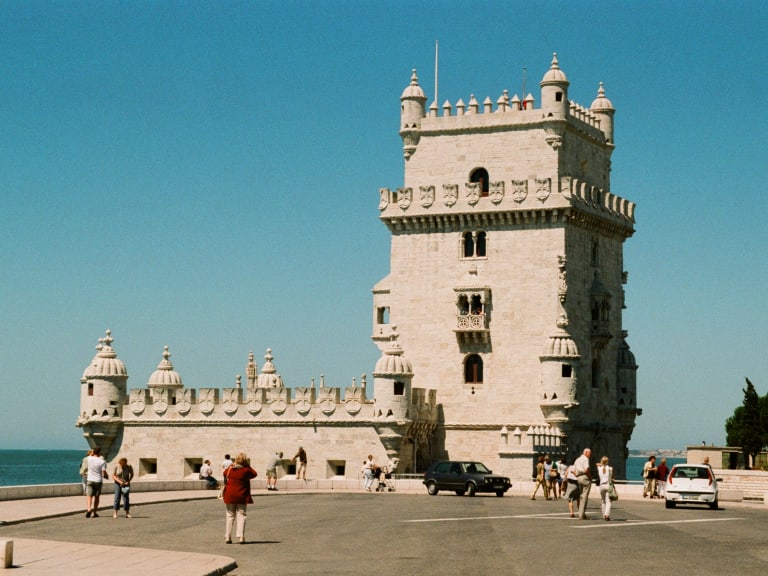
The two cities share the same coastal location but do not have the same climate. Porto is about 300 km further up the coast and this is reflected in the weather. Read on to discover their characteristics.
Porto is located in the north of the country at the mouth of the Douro River at the Atlantic Ocean. Being by the sea, its winters are not usually very cold and the only drawback may be the rain. Statistically, November is the month with the highest rainfall and July is the driest. During the summer, Porto is pleasant to visit as the highs don't usually exceed 30º.
As in Porto, November is the month with the highest rainfall but, unlike the other city, summer is not the best time to travel there. Don't get me wrong, the Portuguese capital is always worth a visit but, between June and the beginning of September, the heat and humidity are noticeable.
If that's not enough, tourists often fly here to enjoy the longer days and the light that floods the streets. In any case, I recommend you to read the post about the 10 things to do in Lisbon in the summer.
Gastronomic offer in Porto vs. gastronomic offer near Lisbon

The most important cities of the neighbouring country share many dishes: both are on the coast and Portugal is not very large. However, there are some recipes that are very typical of Porto and others that originate from the capital. Read on, we have prepared a small list with the typical dishes of each one:
Porto
Porto dishes tend to be more hearty compared to those from the south. The first recipe demonstrates this perfectly:
- Francesinha, a sandwich that won't leave you hungry. The two slices cover a pork loin steak, cooked ham, cheese and spicy beer sauce. If you want to finish it, it's best to share.
- Tripas à Moda do Porto, a stew made with beans and beans. The inhabitants of Porto are nicknamed "tripeiros" because during the past centuries, the best meats left the city and its inhabitants had to eat the leftovers. However, this dish is very tasty and I encourage you to try it.
- Bifana, a roll stuffed with marinated pork and served with tomato sauce. In Porto, the best ones are eaten at Conga, a traditional bar near the Rivoli Theatre (Rua do Bonjardim 318, 4000-115 Porto, Portugal).
- Bacalhau à Gomes de Sá, a recipe developed in the 19th century at O Lisbonense restaurant in Porto. It is cod marinated in hot milk and cooked with potatoes, olives, parsley and egg.
Lisbon
The city of Camões is a popular destination for its food. It's best known for its pastéis de nata (cream pastries) but there's much more on offer. If you are an inveterate glutton and you have decided to travel to the Portuguese capital, I recommend you to read the post about the best gastronomic tours of Lisbon.
- Bacalhau à Brás, a dish that was born in the Portuguese capital itself by Senhor Braz, a tavern keeper in the Bairro Alto. This recipe uses crumbled cod with potatoes and egg. It is usually garnished with black olives.
- Sardinhas asadas, very typical in Lisbon, especially on the occasion of St. Anthony's Day (13 June).
- Pastéis de Belém, the famous cream tarts, still made according to the original recipe from the 19th century. The temple of this dessert is located at Rua de Belém 84
- Bolos de arroz, rice cakes made with rice flour.
Portugal has a rich gastronomy and during your holiday you will have the opportunity to taste many tasty dishes. Cod alone has thousands of variations and some recipes are popular all over the country. In both cities you can enjoy Chicken Piri Piri Piri (with its delicious spicy sauce brought from Mozambique) or the traditional Pataniscas a la bacalhau (cod fritters). If you travel to Lisbon in winter I recommend you try two soups: Caldeirada de bacalhau and Caldo Verde.
How to visit Porto vs. how to visit Lisbon

The Portuguese capital is larger than its northern cousin. Although it's much smaller than other European capitals, it 's quite difficult to get around without taking the metro or a tram. If you stick to the old town you can visit a number of monuments, but if you don't want to walk too far, you can take an electric bike tour or a tuk tuk tour. These tours leave from a central location and take in the most emblematic sights of the capital. The price is usually around €30. If you're short on time and want to visit the essentials, I recommend reading the post Lisbon in a day.
Porto is even smaller and if you have a weekend, you can easily walk around it. However, if its steep slopes put you off, there is a solution: a number of tour operators offer Segway tours, bus tours and river cruises. The cheapest option is the tourist bus, which usually costs around €20.
What photos can you take in Porto and what photos can you take in Lisbon?
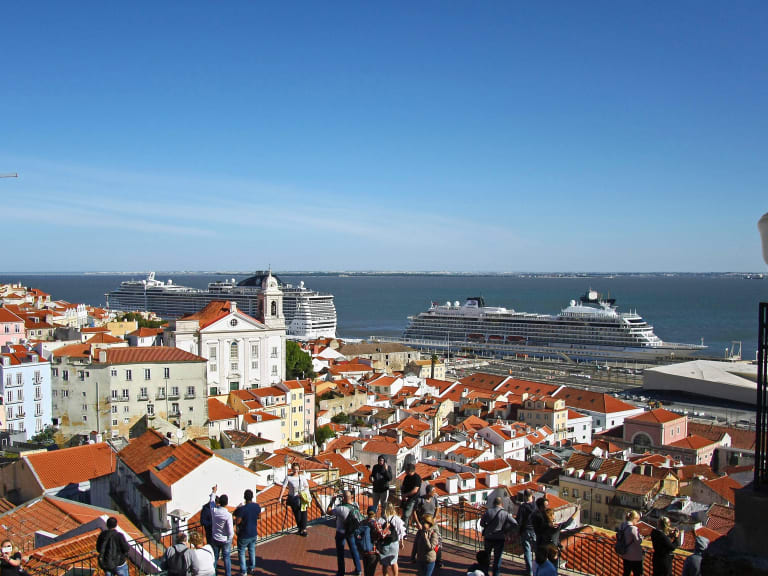
Both cities are a paradise for instagrammers and fans of this noble art. Their decadent buildings and ubiquitous tiles are perfect for a stylish photo shoot. However, each has its own magical corners. Read on, let's get started with Porto's must-see places!
- Livraria Lello, the most beautiful bookshop in the world. It is said to have inspired J.K. Rowling while she was writing Harry Potter (Rua das Carmelitas, 144).
- Capela das Almas, a church whose walls are entirely covered with white and blue tiles. It was built in the 18th century but the tiles were added in 1929 (Rua de Santa Catarina 428).
- Rua de Cabo Simao, from this street you have an incomparable view over the Douro River and the Luís I Bridge. It is located on the opposite bank of the city.
The Portuguese capital is not far behind. There are numerous spots where you can immortalise the best moments of your holiday. Below you will find the top 3 in Lisbon:
- Belem Tower, a splendid watchtower in neo-Manueline style. Its original decorations will leave you open-mouthed. It is located on the banks of the Tagus and has a unique charm. To see it from a different perspective, you can opt for a cruise along the Tagus (Avenida Brasília).
- Porta do Sol viewpoint, perhaps the best panoramic viewpoint in the city of Camões. It is located in the Alfama district and enjoys a splendid view over the red roofs of the centre, the churches and the National Pantheon (Largo Portas do Sol).
- Tram 28, the most famous line in the old town. The convoy departs from Campo Ourique and ends its journey at Praça Martim Moniz. The most beautiful part is the Alfama district. Follow the rails and find the most picturesque spot. At some points, the tram passes through some very narrow streets.
Crowds in Porto vs. crowds in Lisbon
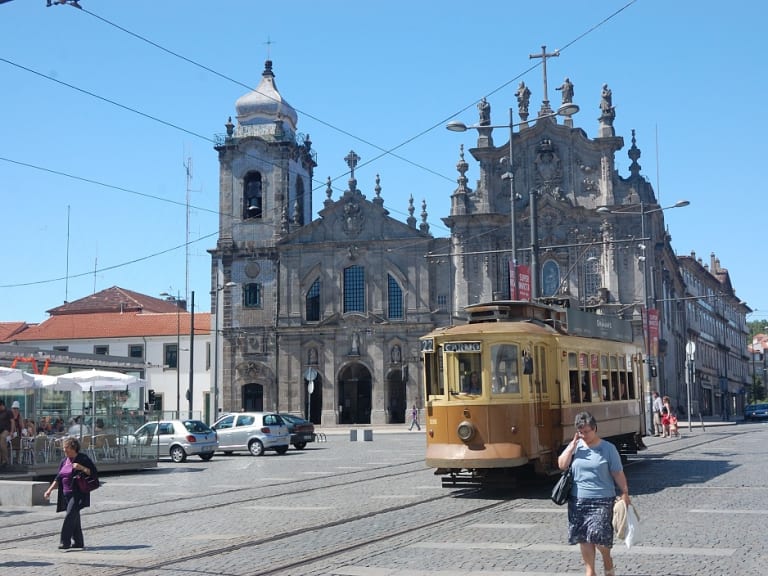
Portugal is a highly sought-after tourist destination. The country's architecture, gastronomy and affordable prices attract thousands of travellers. Being larger, the capital hosts a larger number of tourists, yet Porto can seem more crowded. In Lisbon, people are spread out over a wider area while in Porto they are concentrated on the riverbanks and in the nearby old town.
Close to Porto's riverside promenade are the main attractions such as the wine cellars of Vila Nova de Gaia. In this area you will find many tourists who usually have a glass of Porto at the famous Calém Winery (Avenida de Diogo Leite 344) or the Sandeman Winery (Largo Miguel Bombarda 3) which you will recognise by its typical figure portraying a man with a cape and a hat.
Visit Lisbon and visit Porto, choose according to your travel plan
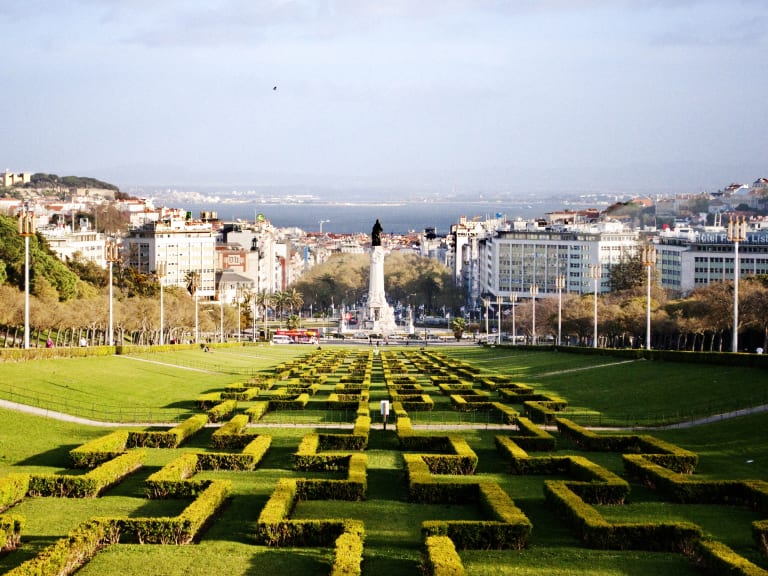
Beauty is subjective and any destination can be more or less appreciated depending on the characteristics of each person and what a traveller is looking for in a holiday. The list below will help you decide your next destination.
- If you want to take good pictures: Lisbon. Without taking anything away from the monuments and sights of Porto, the Portuguese capital has more scenic spots and traditional neighbourhoods that are an instagrammer's paradise.
- If you want a quiet visit: Porto. Although it's an up-and-coming tourist destination, most visitors choose the city of Camões. Porto is a more traditional city and if you go a little further away from the Ribeira, you won't find many travellers.
- If you're short on time: Porto. This city in the north of Portugal is smaller and can be easily explored on foot. On the other hand, the Portuguese capital is more extensive and if you want to explore it thoroughly, you'll have to take a bus or tram.
- If you're on a budget: it doesn't matter. Both locations are affordable and prices are generally lower than in Spain or other European countries.
- If you want to have a drink during your visit: Lisbon. As it is a large city, it has a more varied leisure offer. Bairro Alto is the favourite place for young people, while Docas (under the 25 April Bridge) is the most exclusive area.
- If you are interested in the old: Lisbon. Not even the 1755 earthquake could erase its historic buildings.
- If you are interested in the modern: Porto. The northern city gave birth to two internationally famous architects: Álvaro Siza Vieira and Eduardo Souto Moura.
- If you want to visit the nearby towns: it doesn't matter. If in Lisbon you can visit Cascais, Sintra and Evora (just to name a few), in Porto you can easily reach Braga, Guimarães and Aveiro, the Portuguese Venice.
Conclusions

There's no need to sing Lisbon's praises, the city of Camões has a unique charm and a rich history that comes with being a capital city. If you are looking for a destination with good food, interesting museums and stunning viewpoints, Lisbon is the city for you. Here you can relive history, see traces of the 1755 earthquake and imagine the Portuguese caravels as they leave the port of Belém, right next to the iconic tower.
If, on the other hand, you prefer to explore a slightly different, more modern destination, Porto is the ideal choice. Street art has revolutionised the northern city as works by local artists adorn the Trindade metro station, Rua de Sá de Noronha and other streets in the centre. Contemporary architecture is another irresistible attraction, as is the Parque da Cidade, a green area of rare beauty designed by landscape architect Sidónio Pardal.
